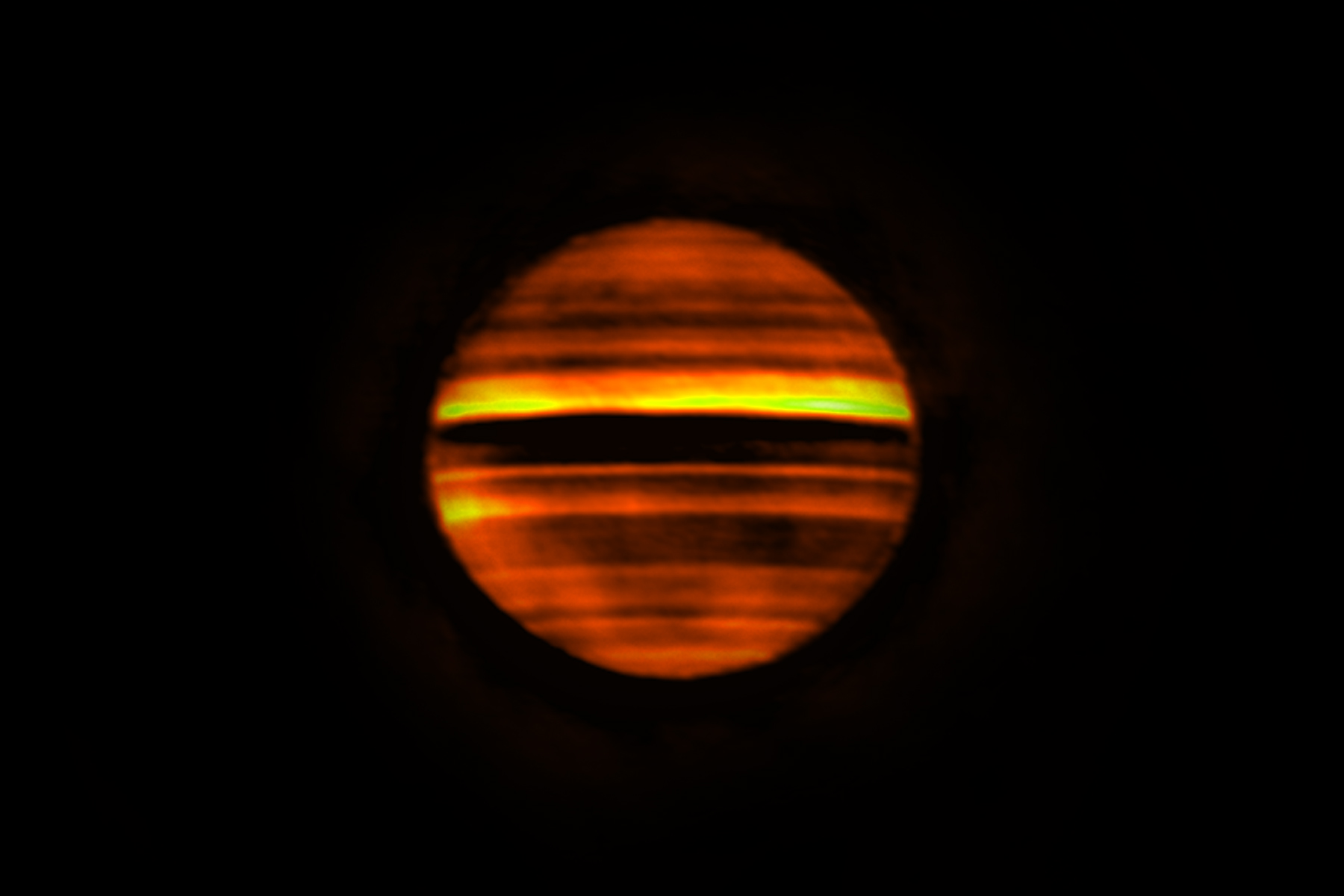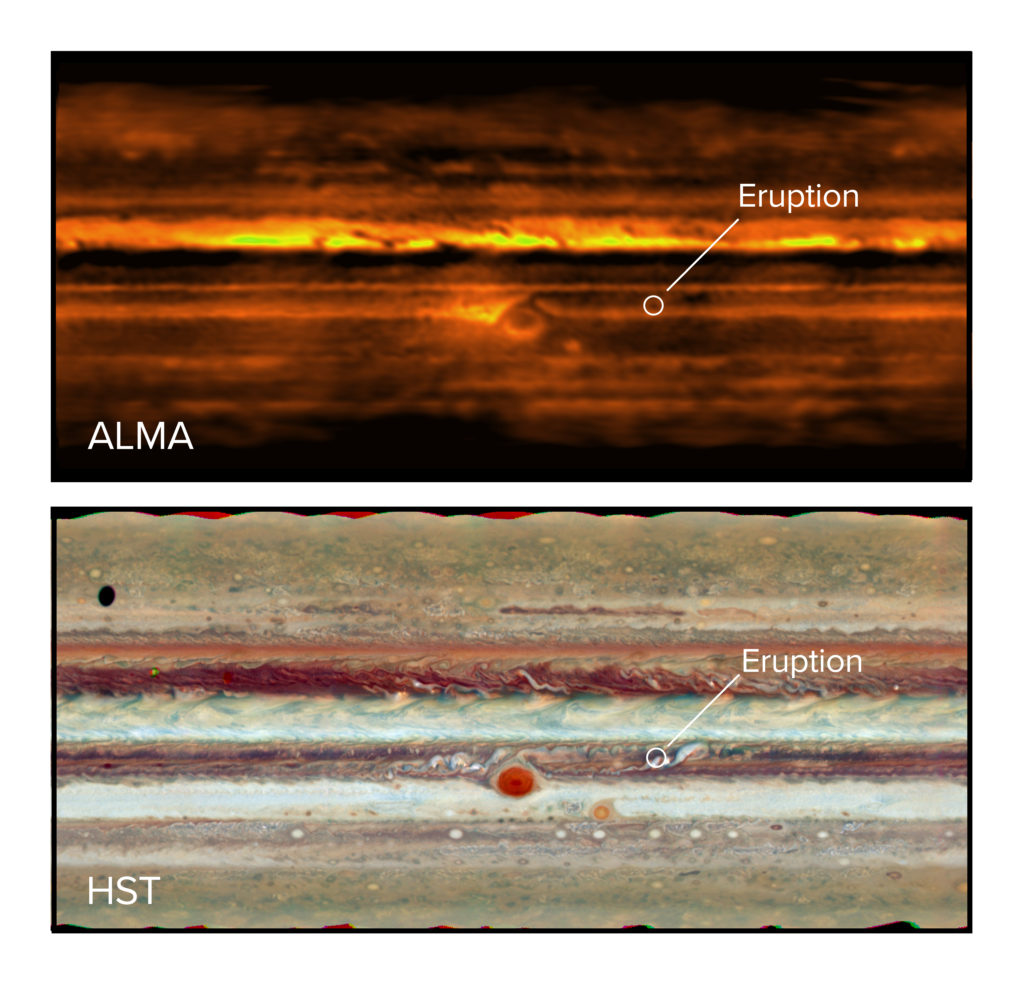When storms carry ammonia gas to the top
Jupiter is easily identifiable from the band-like structures that extend across its surface. These belts are areas of different rotation and quite different properties. But what’s going on underneath them? The Hubble telescope or probes such as Juno primarily show just the exterior layer. To understand the dynamic behavior of Jupiter’s atmosphere, scientists need to look into its depths – something the Atacama Large Millimeter/submillimeter Array (ALMA) makes possible in the radio frequency range.
The atmosphere of the gas giant consists primarily of hydrogen and helium with traces of methane, among other things. In the uppermost cloud layer, however, there is, at first, ammonia ice. Underneath that there is a layer of solid particles made from ammonium hydrosulfide. Even deeper, about 80 kilometers (50 miles) below the uppermost clouds, there is probably a layer of liquid water. Many of Jupiter’s storms unleash their fury in these belts. They are comparable with cyclones and anticyclones here on Earth and are often linked with electrical discharges. In visible light, they are often seen as bright clouds called plumes. Plume eruptions can significantly disrupt a belt’s appearance. They are often visible for months or even years.
In January 2017, amateur astronomers observed just such a plume eruption on Jupiter. Then a research team was able to use ALMA to take a closer look. As the researchers now report in a paper, ALMA helped them to unlock details about the eruption. “Our observations show for the first time that during an eruption, large amounts of ammonia gas are transported upward,” says the astronomer, Imke de Pater of the University of California, Berkeley. “We were also able to confirm the theory that the eruptions are caused by moist convection at the bases of water clouds deep in the atmosphere. They then transport the ammonia all the way to the top, above the normal ammonia cloud deck.”

